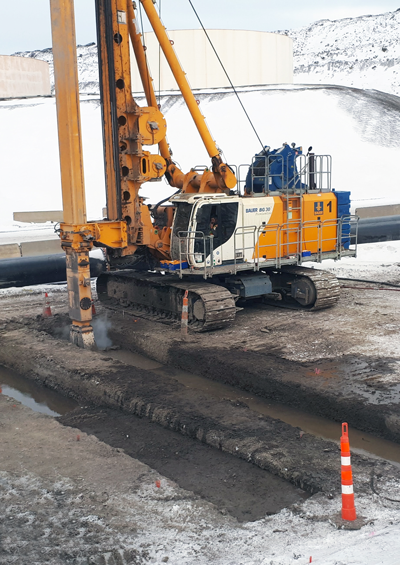Red Dog Mine (USA)
Red Dog Mine, one of the world’s largest zinc mines, is located in the northwest of Alaska, around 170 km north of the Arctic Circle and nearly 1,000 km to the north-west of Anchorage. A ground improvement program was implemented as a practical risk reduction strategy, to counteract strength reductions and settlement, which could be expected if the frozen, ice-rich native coarse warm permafrost soils, which underlie a tailings dam, were to thaw and be subjected to a seismic event, inducing liquefaction. Due to the unique nature of the soils and to confirm the achievable treatment parameters, prior to planning the full-scale ground improvement program, a ground improvement fi eld trial program was carried out, before the final design of the liquefaction mitigation system. The two ground improvement techniques selected for the fi eld trial, were CSM and jet grouting. The results of the fi eld trail identified the CSM method as the most suitable choice for the main scope.
Geology:
Fill, native soil (that requires treatment), bedrock.
Scope of works:
Field Trial:
- CSM panels 5 no, (2 of which were pre-drilled using Kelly pre-drill methods)
- Jet grouting 18 no
- Verification coring
Main Scope:
- Pre-drill piles 660 no, 1,000 mm diam
- CSM panels 462 no., 1,000 mm width
- 93 No. 1000mm diam secant wall piles
Miscellaneous:
One of the main challenges was the mobilization of equipment. Some equipment was transported by plane and then by ship from Seattle Harbor, across the Bering Sea to a dock just over 80 km from the mine. Other equipment was transported via Hercules aircraft, from Anchorage airport to the airport on the mine site.
INFO
Construction Method: Cutter-Soil-Mixing, jet grouting, verification coring, secant pile wall
Construction Materials: Soil-slurry mix
Main Equipment: BAUER BG 30 for pre-drilling and CSM, small drilling rig for jet
grouting and verification coring
Construction Period: Trials in 2019, and main scope of works in 2020 and 2021





